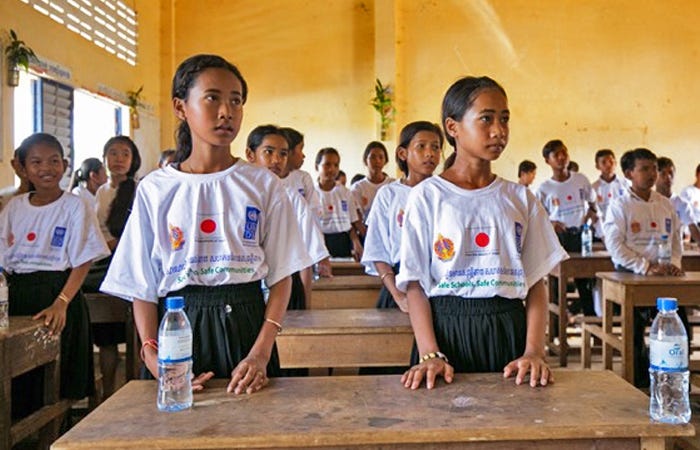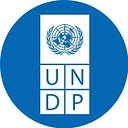In Cambodia and around the world, a safe community starts with a safe school
By: Muhibuddin Usamah, UNDP Disaster Management Specialist in Cambodia and Manuth Buth, intern with UNDP Cambodia

If we are lucky, in our lifetimes we will never experience a disaster. Never know what it is to have our homes and belongings washed away by a flash flood. Never know how it feels to flee an approaching tsunami. Never know what it is to experience, first-hand, a violent cyclone or simply, destructive strong wind.
Yet disasters can strike anywhere and anytime.

Consider this. According to the international disaster database ‘EM-DAT’, 318 natural disasters touched 122 countries in 2017, resulting in over 9,500 deaths, 96 million people affected, and US$314 billion in economic damages.
Weather-related disasters accounted for the majority of the human and economic losses: almost 90% of deaths were due to climatological, hydrological or meteorological disasters such as storms and floods.
Some regions are more vulnerable than others. For those who live in hazard-prone areas, the looming risk of disaster more or less become part of life.
We cannot prevent a disaster from happening — but we can take advance steps to prepare and protect.



In Cambodia, the government recognizes the value of preparedness. The Ministry of Education, Youth and Sport’s disaster management program is partnering with the Government of Japan and the UN Development Program (UNDP) to train students and teachers in hazard-prone areas to be prepared and stay safe during natural hazards.
As well as disaster awareness, the schools prepare their emergency management plans and practice safe evacuation. Students also learn basic first-aid skills and test emergency kits.

Between March and April 2018, more than 1,622 students and teachers participated in the emergency drills in Stueng Hav and Prey Nob Districts of Sihanoukville.
The drills were part of a national strategy to mainstream climate change adaptation and disaster risk reduction into their activities.
While the risk of a tsunami affecting Cambodia is low, the risk of coastal flooding is increasing with the rise of the global mean sea level. To maximize preparedness for any natural hazards, Cambodia is one of 18 countries taking part in the regional initiative “Strengthening Schools Preparedness for Tsunamis in the Asia-Pacific region”.
Being part of the project gave five Grade 10–11 students the opportunity to travel to Japan and as Cambodia’s delegates to participate in the World Tsunami Awareness Day on November 5, 2018.

Editing by Kate Jean Smith
For updates on UNDP Cambodia’s work in disaster risk reduction, follow @UNDPCambodia @muhiusamah #90Drills
